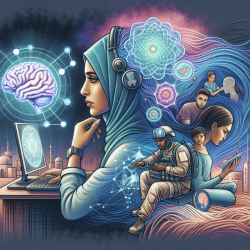Introduction
As a passionate advocate for data-driven decisions in speech language pathology, I'm thrilled to explore the exciting intersection of digital gaming and speech therapy. The systematic review titled Application of Digital Games for Speech Therapy in Children: A Systematic Review of Features and Challenges sheds light on the innovative use of digital games to enhance speech therapy outcomes for children. This blog post aims to distill the key findings of this research and provide practical insights for practitioners eager to integrate these tools into their therapeutic arsenal.
The Rise of Digital Games in Speech Therapy
Digital games, often referred to as "serious games" when used for educational and therapeutic purposes, are increasingly being recognized for their potential to transform traditional speech therapy practices. According to the research, digital games offer an interactive and engaging platform that can significantly boost children's motivation, satisfaction, and attention during therapy sessions. These games are not just about fun; they are meticulously designed to provide structured feedback and promote learning through play.
Key Features and Benefits
- Engagement and Motivation: Digital games create an emotional connection with players, encouraging sustained participation in therapy.
- Feedback Mechanisms: Games provide immediate and tailored feedback, which is crucial for reinforcing correct speech patterns and boosting confidence.
- Parental Involvement: Nearly half of the games reviewed were designed for use with parental assistance, facilitating at-home practice and reducing the burden on therapists.
- Technological Integration: Advanced algorithms like the Mel-Frequency Cepstral Coefficients (MFCC) and tools such as PocketSphinx are employed for effective speech recognition, although challenges like environmental noise remain.
Challenges to Overcome
Despite the promising potential of digital games, the research highlights several challenges that must be addressed to optimize their effectiveness:
- Speech Recognition Limitations: The accuracy of speech recognition tools can be affected by ambient noise, requiring developers to implement noise-reduction strategies.
- Frustration and Self-Esteem: Repeated failures in games can lead to frustration and low self-esteem in children. Games must be designed to balance challenge and success to maintain a positive user experience.
- Customization and Relevance: Ensuring that game levels align with the specific needs of the target group is essential for maximizing therapeutic benefits.
Implementing Digital Games in Practice
For practitioners looking to integrate digital games into their therapy sessions, the following steps are recommended:
- Stay Informed: Regularly review the latest research and technological advancements in digital game design for speech therapy.
- Collaborate with Developers: Work closely with game developers to ensure that games are tailored to the specific needs of your clients.
- Monitor and Adapt: Continuously assess the effectiveness of games in therapy and be prepared to adapt your approach based on feedback and outcomes.
Conclusion
The integration of digital games into speech therapy represents a promising frontier in enhancing therapeutic outcomes for children. By addressing the challenges identified in the research and leveraging the unique benefits of digital games, practitioners can create more engaging and effective therapy experiences. As we continue to explore this exciting intersection of technology and therapy, the potential for positive impact on children's speech development is immense.
To read the original research paper, please follow this link: Application of Digital Games for Speech Therapy in Children: A Systematic Review of Features and Challenges.










